Q1. The survey that you used from the article "Does Brand Attitude Moderate the Persuasiveness of Humor in Advertising' comes very close to what I may need. First of all, do you have any opinion on the idea of matching two-sidedness with various intensities of humor (aggressive humor, no humor, and mild humor)? Finally, can you help me by allowing me permission and sending me the survey that you used or anything else that may help? (Asked by Anthony Campos)

I do not see a relationship between humor intensity and message two-sidedness. This however does not mean that one does not exist and could not be justified from a theoretical perspective. Perhaps if you articulated your theory, I could try to give you my take on it.
More importantly, though, I am not convinced that mild humor and aggressive humor is a manipulation of humor intensity. Aggressive humor seems to be a type of humor rather than being more intense humor. So, you would be well served if you first defined conceptually what you mean by humor intensity. One way would be to simply define it as consumer perception of humorousness being more or less extreme. This way you could use different humor manipulations and perhaps use replicates of the different types of humor to rule out the type of humor confound that I just noted.
Regarding the survey I used, I am afraid I no longer have it on file. You realize that the paper you are referring to was published over 20 years ago and, unfortunately, with many changes in the computers I have used, as I have moved schools,.. I no longer have it with me. The questionnaire I used in terms of the specifics of the items is reported in detail in the paper, including the sequence in which the questions appeared. As such, you should be able to reconstruct the survey fairly easily. Good luck.
Q2. Looking at MNC's, the top ranked companies are originating from the United States or are present in the United States. What enhances the success of these firms in the United States market and not other markets? (Asked by Ogunlana Opemipo )

There are many reasons for this. Let me bring up three important ones here. First, from a historical point of view, the Second World War created a huge opportunity for US businesses. Western Europe was physically in shambles due to the destruction caused by six years of war. Infrastructure, factories, the labor force, everything was in tatters. US firms had a clear opportunity to jump in and build their business with no local competition. This not only meant that they began or extended their journey of internationalization, but they were able to grow big and grow big unhindered by local competition, making the growth fast and profitable.
Second, the infrastructure to support business is fabulous on at least two counts. On the one hand financing is readily available. The venture capital availability in the US makes a huge impact on the growth of new entrepreneurial businesses. Thus, the emergence of household names like Apple, Microsoft, and Google in the last three decades. On the other hand, the world class universities like, Harvard, Stanford, MIT, and others, that are open to students from around the world, often brought in with generous scholarships, creates a potential talent pool that is outstanding.
Third, the US has a very friendly business environment with the government strongly supporting business by creating a regulatory environment that is conducive to business. Indeed, the comparatively liberal and open immigration policy, which is part of this, contributes heavily by providing an outstanding and very hard working talent pool. As research shows, the level of education and success in the first generation immigration population is higher than the population average.
Q3. Looking to the future, what are the key focus areas for India's EMNCs looking to expand globally?
(Asked by Olusegun Adu )
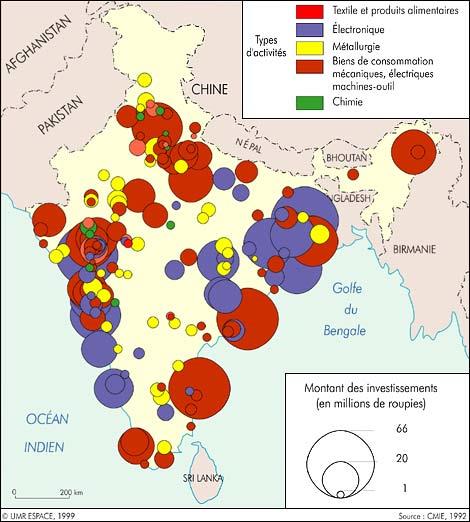
Your question, interestingly, is very similar to the one I answered yesterday about domestic Canadian companies should think about internationalizing. Your question is asking what should Indian EMNCs do to become global players? They should avoid the temptation to over reach, not stay still, and plan for the future taking a long view. These are the three prescriptive suggestions that we distil from the research we report in our book The New Emerging Market Multinationals: Four Strategies for Disrupting Markets and Building Brands. The suggestion for domestic Canadian and Indian companies is the same because businesses from both these countries are typically challenger businesses, but for a few Canadian exceptions like Adobe and Bombardier.
Q4. What is your advice for Canadian companies who are looking into becoming a multinational? (Asked by Troy Friesen)
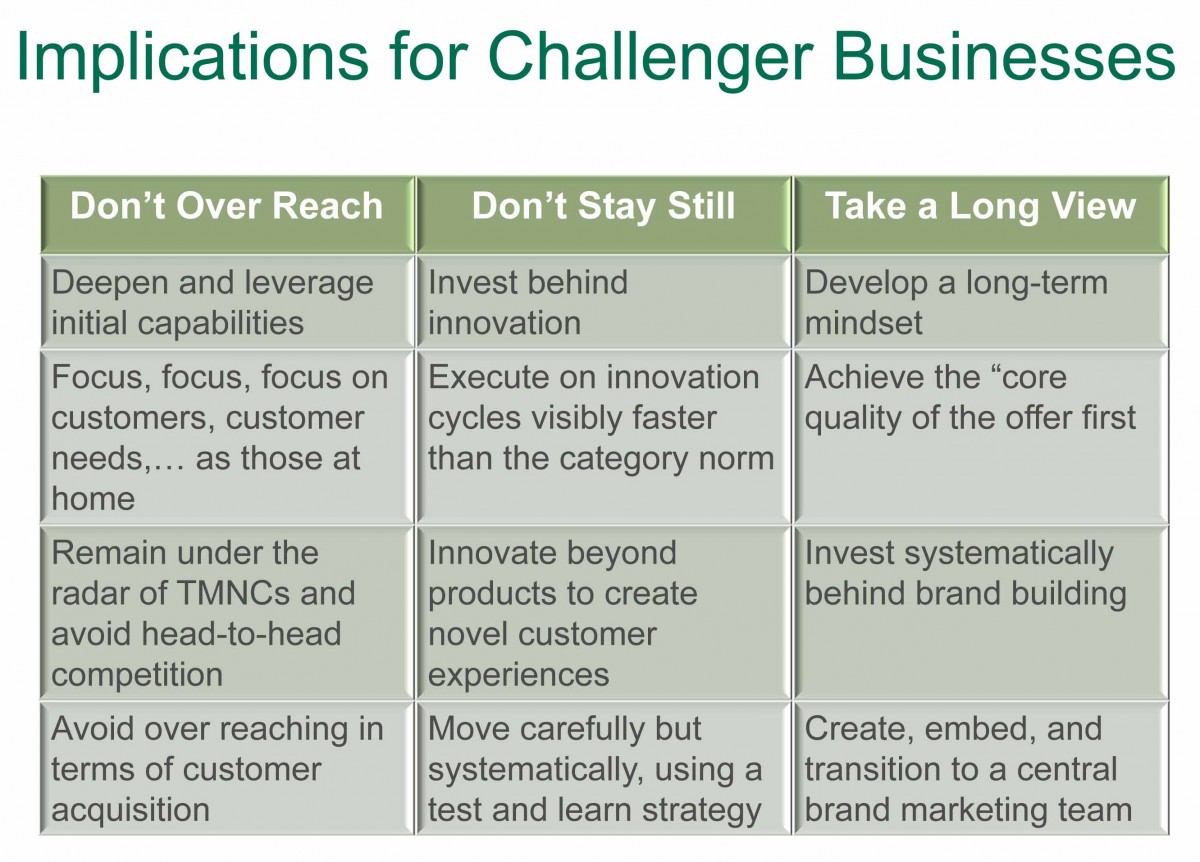
The lessons for Canadian companies looking to become multinationals is the same as that we offer to EMNCs in our book The New Emerging Market Multinationals: Four Strategies for Disrupting Markets and Building Brands: Don’t over reach, don’t stay still, and take a long view. Let me elaborate on each of the three. By don’t over reach, we mean that the firm needs to remain focused on its core business, be that customer segments, technologies, product categories, and the like. While doing so, they need to deepen their capabilities by investing in them and then leveraging the same to expand in to new markets abroad, to the degree possible, initially choosing markets that are not occupied or heavily contested by the MNCs.
A good example is Mexico’s Grupo Modelo. From the large portfolio of beers it markets at home, it focuses on one beer internationally, Corona Extra. It sells it on a platform of relaxation the world over and competes as a “import” in the markets that it operates in. Initially, it targeted holidayers in Mexico who wanted to remember the good times by drinking a bottle of Corona Extra. Corona Extra has been so successful that it is now the largest selling imported beer in the US, having overtaken Heineken!
Don’t stay still is our second recommendation. It is about investing behind innovation, doing so cleverly to achieve superior results with faster cycle times, but do so judiciously, using a test and learn strategy, so as not to break the bank if some initiatives fail. A good example of this is Brazil’s Natura. Natura is a pioneer in open innovation, long before the term became a management buzzword. They have a small in-house R&D team and collaborate with universities and research institutes in Latin America, Europe, and elsewhere, supporting appropriate projects, which they monitor closely and bring in-house only when the look commercially promising.
Natura has combined its sales, marketing, and R&D under a single business development head. This allows the R&D to be customer focused, and because of its direct sales model it is able to put innovations in to the market and use sales uptake and customer feedback gathered through its direct sales force to make decisions on how to take the business forward. Natura’s innovation machine is lean and effective. They spend 2.5% of their revenues on R&D compared to over 3% at L’Oreal, the world’s leading purveyor of cosmetics. Importantly, the 2.5% spend is on a much smaller revenue base, an order of magnitude smaller than L’Oreal. Yet, Natura is able to bring to market successful innovations to market as well as the best in breed. Over the past 10 years, approximately 65% of revenues have come from products launched in the previous two years and Natura has expanded throughout Latin America and now is present in Western Europe, which it entered through France. You can read more about this in my published case study.
The third recommendation is take a long view. Going global is a big leap forward and it takes time; thus you need a long term mindset. We recommend taking a long view and focusing on the quality of the core offer and ensuring that it is world class, investing systematically behind brand building, and developing the management capabilities that allow you to manage the brand internationally from a central location.
India’s Marico offers a good example. Over the past decades it has not only developed quality product offerings, but developed them to occupy specific customer need niches in particular markets. It has systematically invested in brand building, investing behind some of its core brands like Parachute Advansed, originally a hair oil brand that now offers a range of post-wash hair care products. It has developed world leading capabilities in dealing with fragmented distribution channels, enabling to garner strong support for its brands from the mom and pop stores that are ubiquitous in the markets it primarily serves–South Asia, Middle-East, and North Africa. It has created a central marketing team at its headquarters in Mumbai, India and is slowly but systematically centralizing marketing strategy and support functions there, leaving the local activation of strategy in the hands of local markets, just as the leading MNCs do. This latter step is still evolving and it will take time. Marico understands it is a journey and is taking it one step at a time.
Q5. After reading your book "The New Emerging Market Multinationals", I gained great insight on the dynamics and evolution of smaller firms that strive to enter and compete among the giants in global markets. From the research that I have done, I have found that there are five main challenges that Western multinationals routinely confront in emerging markets. These are as follows:
1. Mismatched Resources
Leaders often do not allocate the right resources to emerging markets and often need convincing to change resource allocation.
2. Talent
Western multinationals face a number of challenges getting the right people in the right places. There are simply not enough people who know the local market thoroughly and who understand what it takes to execute strategies in an efficient manner.
3. Innovation
International products and prices do not always translate into profits in emerging markets, particularly for consumer industries. It becomes difficult for companies to offer a standard global product when consumers have significant differences in income, language, literacy, social diversity, and urbanization.
4. Risk and Stakeholder Management
No matter how successful a global organization is at managing risk at home, the task is larger for emerging markets.
5. Early and Long-Term Commitment
Western companies' operations in emerging markets can become stuck once they hit their midway point. These businesses see some success but suffer from a lack of commitment to increase investments and build operations or management systems specific to a given market.
It is apparent that all of the challenges listed above go hand in hand when trying to create a successful multinational corporation. My question to you is if there was one soul challenge to overcome that you were to choose from, which would you say would be the most important in efforts to break into the global market and maintain a successful corporation, and why?
(Asked by Delica Sirha)

You raise a great question. I think that the role leadership plays and the reporting relationship between the emerging markets and leadership is what is most fundamental in successfully entering and developing an MNC’s business in an emerging market. This is because by attending to the emerging market’s business needs directly, the leadership is able to sweep away the inevitable short termism as well as the consequences of organizational processes that are a part and parcel of MNCs.
An excellent example of what I am getting at is GE’s healthcare business in the emerging markets. GE was an early entrant in to China and India when Jack Welch was the CEO of GE. Notwithstanding its early entry, GE’s healthcare business in these markets remained tiny. The reasons were precisely the first three reasons you mention: mismatched resources, talent, and innovation. Recognizing that the business was failing to achieve the potential and desired goal, Jeffrey Immelt, by then the CEO of GE, took the radical step of having China and India report directly to him, along with the heads for the US, Western Europe, and so on.
With this one move, he had direct oversight and was able to allocate the resources and talent necessary to these markets, but more importantly support innovation targeted at these markets. The result was path-breaking products like the MACi, an ultraportable (<1kg), battery opereated, ECG machine priced at US$500, that was capable of doing 500 ECGs on a single charge of its battery at a cost of $1 per ECG, that was developed and brought to market out of India! Compare this to the MAC 5500 that sold for more than US$10,000. The MACi is capable of providing the same level of accuracy and reliability in its readings as the MAC5500.
The MACi and other breakthrough products like it have come out of China and India and have not only had a big impact on these and other emerging markets, but have had an impact on GE’s sales in the developed world. Doctors in small towns and in rural areas have acquired these machines seeing an opportunity to scale up their practice.
Q6. I notice many MNC's that do very well in emerging markets, but do not have a very solid presence in their country of origin. How important is it to have a strong home foundation from which to build from for EMNC's? (Asked by Bryce Carter)
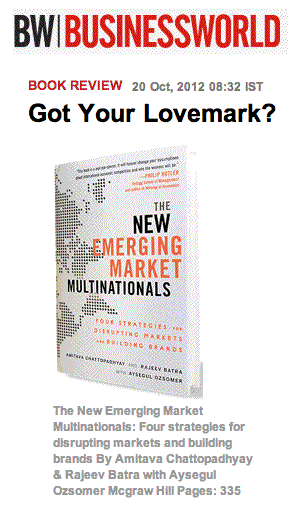
Almost all the EMNCs we studied for our book had a strong presence at home before expanding internationally. This is because a business needs to have a strong foundation in its home market before going abroad to iron out the bugs from their business model, develop capabilities that can provide it with a competitive advantage, have the financial resources to expand, and the like before taking on the challenges that internationalization naturally poses.
If you look at the international business literature, this is equally true for MNCs. Of course there are exceptions to this general rule. Consider for example the Indian IT players like Infosys–one of the companies we studied–which from the beginning had their key markets offshore. The Infosys founders were all working in the US and came to identify an opportunity there which they felt they could capture by setting up a business back home in India where there existed a talent pool of top notch software engineers whose salaries were a fraction of those in the US.
The key to the success of Infosys and other Indian IT players like TCS and Wipro was the development of the so called global delivery model. You can read more about that in my case study on Wipro.
This gave them capabilities such as
Q7. Won't brands and brand recognition be non-existent in the future when we reach the point in which most products have become standardized and all function the same, resulting in purchases based on price and not on the emotional ties of brand loyalty or brand differentiation? (Asked by Stephen)
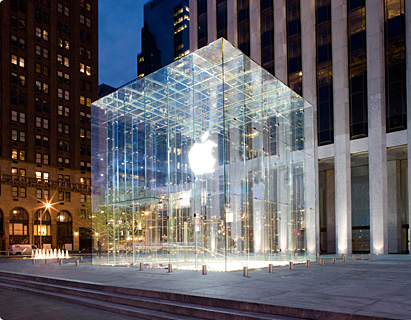
I don’t think that, that will ever come about. You are equating brand to a product. A brand is much more than that. It is about how the product is packaged, how it is brought to you, how it is sold to you, how it is supported after sales, how the company relates to you as its customer, and so on. Those other elements will never be the same across brands because those elements are part of the culture of a particular brand owning firm.
Thus, for instance, the way Apple Inc. announces its products, the show they put, the secrecy around the release, the inevitable “leaks”, the way the Apple Store is designed, the way the store staff are selected, trained, and compensated, the way Apple provides service following sales, all of these elements will be different from that of say competitors like Samsung or HTC or Sony. So, product differentiation can and will fade, but not brand differentiation.
Q8. The book talks somewhat about using cheaper labour from abroad (especially in regards to cost leaders). Is there an ethical part of this for EMNC's or does the ethical side of it come in after they have already been more established in their market? (Asked by Jared Shuster)
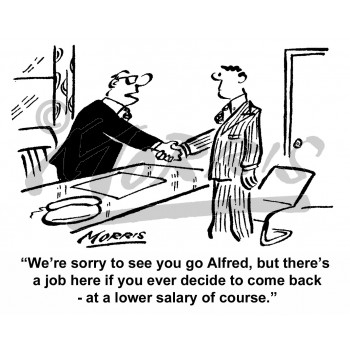
Different countries are at different stages of economic development. The result is that the prevailing labor rate in any given market depends on the conditions in that market. There is nothing unethical about companies located in those markets paying the local going rate. In fact, MNCs when they enter those markets also pay the local market rate. Thus, for instance, when Bombardier undertakes a contract in Thailand–as it has for the Bangkok Sky Train–it employs local labor. Those employees do not get paid the same amount as the employees who may be working in Montreal, Toronto, or Vancouver, where Bombardier may also be building rail systems.
In fact, much closer to home, consider university professors. Business professors earn more than Greek Literature professors. Within business, Finance and Accounting professors earn more than OB and Marketing professors. The jobs they do are fundamentally the same. However, the demand for Finance and Accounting professors is higher relative to the supply. This is not the case in Marketing or OB. So the basic laws of economics drive the labor rate. Ethics is not relevant.
Q9. How do you think MNCs should go about expanding in to Africa? What have some companies done right and wrong in this regard? Currently I'm researching Diageo and their expansion to Africa. What do you think about that company's strategies? (Asked by Sara Bulloch)
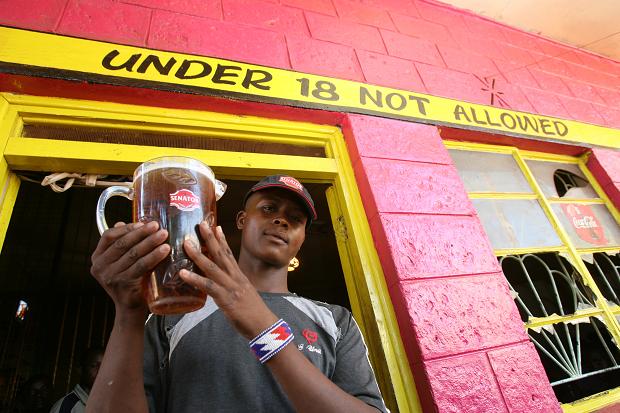
I don’t think there is anything particularly unique about entering African countries compared to say entering countries like Indonesia or Laos or Cambodia, or for that matter India, if you consider Asian markets. At the end of the day, the question you need to ask yourself is, is the market big enough for you and do you have the skills and capabilities to tap the market. If the answer to both questions is yes, then you prioritize the markets and enter in sequence.
The sequence of course depends on many things. Thus, for instance, Turkish companies have entered Africa through North Africa because it is proximate and there are age old business connections. Indian companies on the other hand have either gone through North Africa as well, targeting Egypt as the entry point, or have gone south, entering through South Africa, a country which they are more familiar and comfortable with due to the historic connections and common colonial history. Importantly, both Egypt and South Africa have solid reputations in the African region and thus succeeding their first creates reputational advantages that can be exploited going forward.
Coming to Diageo, Africa is a beer market followed by a cheap spirits market. Diageo does not have a beer portfolio of any consequence, so in Africa it has acquired a stake in East African Breweries Limited in Kenya. They are taking its flagship beer brand, Tusker, across Africa and further afield. EABL has also launched Senator Keg, an extremely successful and highly lauded initiative at the bottom of the pyramid. This is good. But where Diageo have problems is not having cheap spirits. Diageo’s spirits brands, Smirnoff, Jose Cuervo, Johnnie Walker, and so on are very expensive for most Africans. So they need to bring in cheaper brands.
Diageo is trying to do this, but they seem to be going about it in a bit of a wrong headed way. Diageo has acquired a controlling stake in India’s United Breweries. Untied Breweries (UB) has a big suite of cheaper spirits. Logically, Diageo should be trying to select a subset of UB’s vast portfolio of spirits brands and bring them to the African market place. Oddly, Diageo Africa is trying to reinvent the wheel and come up with brands for the African market at great cost, and not leveraging the UB resource that they have access to.
Q10. Are acquisitions and joint ventures by EMNC companies an effective way of overcoming barriers to entry that exist in certain markets? (Asked by Olusegun Adu )

Sure thing. Acquisitions are used to overcome entry barriers all the time. Consider for instance the acquisition of the Zenith watch and watch movement brand by EBOHR the Chinese company that is a sister of the Rossini brand. EBOHR initially tried to develop its own Switzerland based watch business under a new brand called CodeX. However, it soon realized that there was more to gaining acceptance by watch buyers than designing and manufacturing watches in Switzerland to be able to put “Swiss Made” on the watches. Heritage and history mattered a great deal for high end watches. Thus, the acquisition.
It’s not just in luxury products like high-end watches that acquisitions can provide entry. In the humble tea bag business brands matter too and they take time and money to build. Tata Tea was in a hurry and the best way to gain entry in to the global market place was through acquiring Tetley, the second largest tea brand in the world.
Acquisitions also provide access to technology. Thus the acquisition of the RCA TV business by LG Electronics was to get a hold of RCAs patents. Apollo Tyres acquired Dunlop Africa to get the technology for manufacturing radial tyres. Godrej Consumer Products Limited (GPCL) acquired Kinky of South Africa to be able to acquire technology for making quality hair care products for African hair. Without these technologies, LG Electronics, Apollo Tyres, and GPCL would be shut out of the respective markets.
Q11. How do we define a successful acquisition? (Asked by Pengfei Sun)
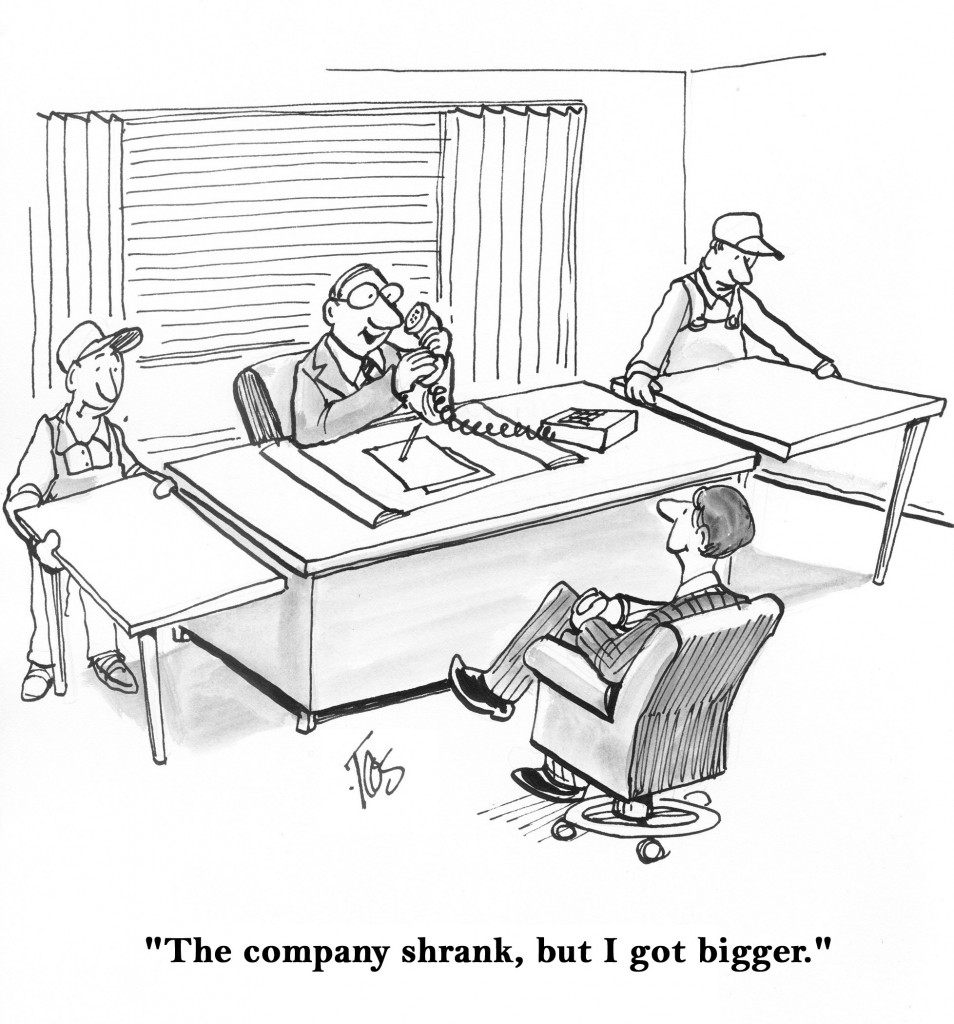
Your question had two parts and I am answering the first part here as I have not analyzed the potential Uniqlo – J. Crew deal that you referred to in the second part to your question. The answer to the success question really is deceptively simple. It depends on the goals the acquirer had for the company it acquired. If the acquisition delivers on the reasons for undertaking the acquisition, it is a success.
In some acquisitions, the main goal is to acquire the acquired companies IP. Thus, while LG Electronics never did much with the Zenith brand, LG Electronics insiders will tell you that the TV patents that Zenith owned more than justified the acquisition of the company. The same could be said about Apollo Tyres‘ acquisition of Dunlop Africa. They wanted acquire the manufacturing capability for radial tyres to enable them to expand under the Apollo brand name. Tata Tea on the other hand acquired Tetley for the brand and to move in to the branded beverage business where margins were far higher. Today Tata Tea has sold off most of its tea estates and has re-branded itself as Tata Global Beverages. Clearly, another successful acquisition.
But, not all acquisitions are successful. Thus Geely‘s acquisition of Volvo has been a difficult one. The company has struggled to sell Volvo cars under the new management. One could also look at TCL‘s acquisition of Thompson and say that was not successful. The acquisition almost destroyed TCL. In that acquisition, the goal of the acquisition was to acquire the Thompson name and the rear projection TV technology in which Thompson was a world leader. Sadly for TCL, their prediction that rear projection TVs would be the next big thing in TVs did not pan out. The market moved rapidly to LCD and plasma TVs, leaving TCL with a technology that was not salable.
So, to judge whether an acquistion is successful, you need to understand the original goal that the acquirer had, and then judge if the acquisition helped them reach the desired goal. Tata Tea we can say successfully acquired Tetley. TCL on the other hand was unsuccessful with its acquisition of Thompson.
Q12. What is the most important quality required for companies to expand in order to become an EMNC? (Asked by Amrita Deol)
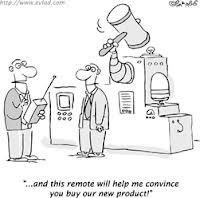
It’s not one single factor that can explain the successful expansion of EMNCs internationally. Rather, it is a combination of factors. Companies need to have the mindset for internationalization and need to believe in themselves. In our book, The New Emerging Market Multinationals: Four Strategies for Disrupting Markets and Building Brands, we refer to this as the winning mindset. You need to add to this the capability for innovation in terms of both process innovation and product innovation, as without innovation, it’s not possible to have a sustainable and differentiated approach. The third element required is customer focus, to be able to drive the innovation agenda in a meaningful direction. Last but not least, you need to be focused. Or, stated another way, you need to be strategic, as strategy is all about choosing certain options and rejecting others. The combination of these four capabilities separates the successful EMNCs from the ones that are not.
Q13. You say that humility is important and you keep bringing up examples from India. Do you think India is just as important to watch as all of these Chinese companies you are talking about? Besides humility what are other important things you think we can take away from Indian acquisitions?
(Asked by Danielle Hoppensack)

I bring up humility as an important characteristic in the context of M&As by EMNCs because this is something that really jumped out. In fact, one could say that Chinese acquirers have not been as successful because of their lack of humility. Consider thus the struggles faced by China’s TCL when it acquired France’s Thompson or Alcatel, or the struggles at Mindray with integrating Datascope, which it acquired in 2008. Or, consider Geely’s acquisition of Volvo. Contrast this with the successful acquisition of Tetley by Tata Tea back in 2000 or Jaguar and Land Rover in 2008. To be sure, there are Chinese success stories like Lenovo‘s acquisistion of IBM‘s ThinkPad business back in 2004, but the failures are much more common.
Aside from humility, what are other reasons why Indian companies have succeeded better on the M&A front. For one, professional Indians have a solid command over English, the language of business today. Chinese managers are far less likely to be fluent in English. India is a sub-continent that does not have a monolithic culture. There are 18 major languages that co-exist with different scripts. According to the Anthropological Survey of India, India has over 300 languages. India is pretty much the home of every religion and in fact has given the world at least four religious philosophies: Hindu, Buddhist, Sikh, and Jain. India has the second larges Muslim population after Indonesia in the world. It is the home of Christians, Jews, Zoroastrians,… all of whom co-exist in reasonable harmony.
Thus, Indian businesses and thus business managers have to cope with this extraordinary diversity as they grow at home, long before they expand outside India’s domestic borders. This gives Indian business managers a capability in managing cultural differences that are unparallelled. As a result, they are better able to manage international acquisitions. They are more skilled in integrating the new business as managing different cultures is second nature.
You and managers around the world should be watching Chinese companies, no question about that. However, it would be terribly myopic if you didn’t watch out for EMNCs from India, Brazil, and elsewhere. After all, you have likely had a cup of Tetley tea (India), have ridden in a Jaguar (India) or Land Rover (India), if not owned one, gone to a Kaya Clinic for a facial or massage (India), flown in an Embraer (Brazil) jet when making a short-haul flight, all without having had to leave home. So, as a business student or a business manager, you need to watch out for far more than local, other developed country, and Chinese companies, you need a global mindset or you’ll be blind sided.
Q14. Do MNC's help the economy of developing countries in which they enter? (Asked by Keith Parsons and Brandt Butt)

Like all multinational businesses, EMNCs, when they enter a new market, create both positive and negative outcomes. Given your question, let me focus on the positive side. On the positive side, EMNCs, when they enter new markets, improve consumer well being by providing differentiated products and services that can improve the lives of end consumers and/or improve the performance of local companies.
A good example of this would be India’s Godrej Consumer Products Limited (GPCL) with its acquisition of Kinky in South Africa. At the time Kinky was acquired, it was contemplating installing a new manufacturing line to cope with the demand for its products. GPCL, which had superior manufacturing capabilities, was able to increase the manufacturing capacity of Kinky to more than what the additional manufacturing line would have added under the old management, by simply reorganizing the existing manufacturing lines. Thus, Kinky’s operational efficiencies went up dramatically, which not only improved its performance and thus competitiveness in the African market, but also created learning for the local managers, who in time could be hired by others and thus transfer the learning.
On the consumer side, GPCL brought in its marketing and logistic capabilities to better distribute Kinky products in South Africa and other African markets. Because of its superior systems and processes, it was able to more effectively and efficiently market and distribute the products manufactured at Kinky, being able to reach more consumers with high quality products without having to raise prices.
Q15. For an EMNC, what would you say is the biggest factor in gaining access to a global market? (Asked by Jared Kushner)
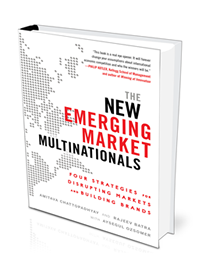
There are two ways of gaining access to global markets for and EMNC, as we discuss in our book “The New Emerging Market Multinationals: Four Strategies for Disrupting Markets and Building Brands“. The first and more traditional approach is through becoming a low cost provider of products and services to a developed world MNC. Foxconn, the Taiwanese manufacturer of consumer electronics and a key supplier to Apple Inc. is a very good example of this. These companies make money through selling large volumes with low margins. As we note in the book, their margins are in single digits while that of Apple Inc. is around 50%.
The second way is to build a global branded business. This requires innovation which can be both process and product innovation. An excellent example of this is China’s Mindray. It has built up its brand around the world, providing medical diagnostic equipment, competing head on with giants like GE, Siemens, Toshiba, and Philips. They have innovated on the process side by, for instance, relying on software to provide functionality, rather than a dedicated chip, as the global majors tend to do. This lowers their cost as well as speed to market dramatically.
Second, they undertake product innovation, looking at the needs of smaller hospitals and clinics in second and third tier cities. Today, Mindray has a sales footprint across the globe and they are able to win business going toe to toe with MNCs. For more details you can look at my Mindray case study.
Q16. Would you say this book can serve as the framework for domestic industries afraid of being overshadowed by daunting MNCs, and would you say your tactics outlined in the book are a good way to respond to those that criticize globalization? (Asked by Leo Lin)

I definitely think that the book can be used as a guide by domestic companies facing the onslaught of MNCs. However, as with everything, one has to judiciously contextualize one’s actions since no two business situations are ever exactly the same.
Q17. If an EMNC wants to compete in a market that is already dominated by a few MNCs, what advise would you give to the EMNC in order for them to compete in that market? (Asked by Justin Tong)

To EMNCs that are desirous of competing in markets where there are one or more dominant MNCs present, I would recommend the EMNC to look for a suitable niche market that they can occupy and, ideally, dominate. Thus, consider Mahindra Tractors. They entered the US, the home of John Deere and Caterpillar Inc., global leaders in tractors. To compete, Mahindra targeted the niche segments of hobby farmers and landscaping companies. John Deere and Caterpillar’s large tractors were not suitable for the small holdings of hobby farmers (<5 acre farms) or for the smaller jobs of landscaping firms, e.g., maintaining a golf course. The result is that Mahindra today has three assembly plants in the US to support its thriving business in the USA and it is the largest manufacturer of tractors by volume in the world.
Q18. Why would an EMNC want to build a global brand? (Asked by Justin Tong)
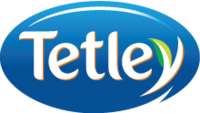
An EMNC would like to build a brand because brands can garner higher margins for the brand owner by enabling them to charge higher prices for products and services that cost not much more to deliver than the generic equivalent. Moreover, branded goods are able to sell larger volumes at these higher prices than the generic counterpart.
To give you some idea, contract manufacturers like HonHai make a margin of about 5% compared to margins of 50% at Apple. Another example is the acquisition of Tetley by (then) Tata Tea Limited. Tata Tea’s margins were about half of Tetley’s 55% margin as the strength of Tata Tea’s brands were far lower than that of Tetley. Having acquired Tetley, Tata Tea were able to expand their sales very substantially both in and outside of India, the home market of Tata Tea, and to do so with higher margins. This more than justified the acquisition price of Tetley for GBP 273 million in March 2000.
Q19. How can one us branding knowledge in our personal lives? (Asked by Liu Xin)

You can utilize knowledge about branding to build a distinct person brand for yourself. This would help you differentiate yourself from your peers when you look for a job, for instance. Let’s consider building your personal brand in the context of getting your dream job, for instance:
- You need to begin by identifying the kind of companies you wish to work for–they are your target segment.
- Then ask yourself the question what kind of person are they looking to hire? This is the needs and attitudes analysis that one typical does with service or product brands. In identifying these profile of people the firm is looking for, focus not just on elements like expertise but also personal characteristics and mindset that the firm finds attractive.
- You could then look at the people around you who are interested in similar jobs and ask the question what do I have or can I acquire that will make me distinct and more attractive to my target employers than my peer group. In making this assessment, don’t just focus on expertise but also elements such as experience (both job and life), personality, as well as your style.
- Then you need to sharpen the capabilities you already have that are key for the job you are looking for, while at the same time acquiring new capabilities that you may need to successfully become the most desirable job candidate. Again keep in mind that the capabilities are much broader than skills and expertise.
- In this endeavor you need to think long term and you need to invest your time and energy consistently over time, if you are going to build a clear, distinct, and lasting person brand for yourself.
You could extend a similar analysis in look for a spouse as well, but I will let you work out the mechanics of that on your own! 🙂
Q20. My question is about the replication of certain brands in different parts of the world. Its obvious that brands and the message they stand for are not patented or able to be patented. I am thinking of brands like China's Hai Di Lao. If I'm a millionaire and I found out about how well Hai Di Lao is doing in China, what exactly is stopping me from creating a restaurant chain by hiring people with little opportunity for succession? How do entrepreneurs stop their brands from being replicated by other companies?
(Asked by Viktor Neiser)
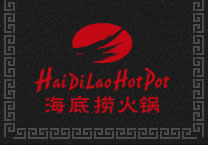
You are assuming that Hai Di Lao‘s business model rests purely on cheap labor available in China. If that had been the case, you are right, anybody with money could have knocked it off and you would see many knock offs of Hai Di Lao in China, and you certainly would not see Hai Di Lao restaurants thriving in higher labor cost countries like Singapore. The key to understanding why successful entrepreneurial businesses are successful and cannot easily be replicated, is because their competitive advantage is not simply better access to cheaper factors of production like labor, but it is the entire culture, systems, and processes that underlie that business.
The culture, systems, and processes are not only not easily visible but cannot be easily replicated. The pioneering company often took years to develop and refine these elements before beginning to expand. They develop the business model under the radar of potential competitors, if you will. And, they continue to refine these elements as they expand and grow, keeping them one step ahead of competition who may try to replicate these aspects, once the business and it success becomes visible. This is why entrepreneurial businesses like Hai Di Lao continue to thrive and grow while so many copy-cat businesses fail.
Q21. Even though emerging market studies show that these countries have possibilities of exponential growth; they can improve diversification of portfolios, and have large and young work force demographics, these countries are known for their risky volatile and corrupt governments and societies. How much should we be discouraged by this fact or should we just hope for the best and invest our time and money in these new markets?
(Asked by Daniel Izquierdo)

When making a business decision, one looks at risk adjusted returns. As such, when one considers investments in emerging markets, because of the higher risk they impose, one should use a higher discount factor to discount projected future cash flows from the project, to adjust for the higher risk. Put another way, in emerging markets, compared to developed markets, a business should invest in projects only to the degree that the rate of return on the emerging market project is sufficiently higher than available projects in developed markets, to compensate for the higher risk. To the degree that a project in the emerging markets provides a positive yield using the higher discount rate, one should invest in it.
Q22. To go from EMNC to MNC, is it necessary for the company to change its DNA? (Asked by Changyu Li and Zhen Zhang )

First of all, an EMNC is an MNC. It is just that unlike the MNCs of yesteryear, these were not born in the developed triad of the US, Western Europe, and Japan, but come from the emerging markets such as Brazil, Russia, India, China, and South Africa, the so-called BRICS nations, as well as other emerging markets like Turkey, Mexico, Indonesia, etc.
If I reframe your question as do EMNCs need to change their DNA as they internationalize, the answer is that this is not necessarily required. Thus, Mahindra Tractors internationalized offering a small (100hp<), reliable, durable, and affordable tractor to hobby farmers and landscaping firms in the US, when it first stepped overseas, from India. The value proposition offered in the segments targeted in the US was identical to that offered to the farmers in India, who have relatively small holdings compared to farmers in developed countries, and thus wanted small, reliable, durable, and affordable tractors. Mahindra had developed and refined their capacity to serve the needs of the Indian farmers over the decades and it is this capability that they leveraged, offering the exact same value proposition to the American hobby farmers and landscaping companies, as they too wanted a small, reliable, durable, and affordable tractor.
Since that time, the company now offers tractors to hobby farmers and landscaping companies in Australia. It sells it small, reliable, durable, and affordable tractors to farmers in China as well as elsewhere in Asia and Africa. The demand in all these markets and segments is the same–small, reliable, durable, and affordable tractors. Thus Mahindra Tractors has emerged as an EMNC, but has not needed to change its DNA, in the process.
Does this mean that firms do not have to change in the process of internatinalization? Not at all. Some firms do. Thus, LG Electronics after struggling for decades with its Goldstar brand in markets around the world chose to kill this brand and in 1995 and launched the new LG brand, worldwide. Contrary to the Goldstar positioning, LG was positioned as a premium and innovative brand. In the short span of around a decade LG Electronics was able to establish the LG brand in both developed (e.g., USA) and developing (e.g., India) markets as a market leader–see my linked cases. To do so, however, LG Electronics needed to transform itself from a low-cost manufacturer to a customer-centric branded player. It for the first time articulated a brand identity. Created the position of CMO as well as a brand head. And, changed the decision making process for new product development from an activity managed out of Korea and led by R&D, to one managed at the C-suite level in the United States and led by a cross-functional team that included R&D, operations, product development, sales, and marketing.
Thus, whether one needs to change ones DNA to achieve one’s strategic goals depends on where the company currently stands and what its strategic goals are. Internationalization per se does not mean that the DNA has to change.
Q23. Up to this point in time, what is most powerful (recognition, replicable, adaptation, longevity, etc.) brand created today by a business and what about that brand is so powerful? (Asked by Wes Pawluk)

Coca Cola has been the leading brand in the world ever since Interbrand started publishing its brand value rankings, until this year, when it fell to number 3 position behind Apple and Google, which grew more dramatically in value than did Coca Cola. If one considers how long Coca Cola has held the top spot, its global reach–Google for instance has exited China, a market dominated by the home grown EMNC, Baidu; brand awareness levels across global markets, and the likelihood that it will continue to retain one of the top spots in brand rankings, I would still consider Coca Cola to be perhaps the most powerful brand in the world.
What makes Coca Cola so powerful? One is its distribution network. It has truly followed up and executed against its goal of being “within arm’s reach of desire.” The brand is ubiquitous. Available everywhere in both developed and emerging markets. In India, for instance, Coca Cola is present in 4 million outlets across the country–accounting for some 50% of all possible outlets that it can be in. It plans to have 100% distribution coverage in the foreseeable future and is investing US$5 billion in India to achieve this goal by 2020, amongst others. The second is its grip on the US market, the largest beverage market in the world. In this market it is synonymous with motherhood and apple pie, making it a part of the cultural fabric of the nation. Third, this entrenched connection to American culture gives it leverage in international markets, where consuming Coca Cola gives the local consumers a connection with the American dream, a dream of having a better tomorrow.
Q24. Do you believe that the contribution of the intangibles to a business’s market capitalization will continue to rise? (Asked by Hadi Saleh)

In a competitive environment functional differences are eroded quite rapidly and businesses typically have to compete on the basis of emotional benefits. As such, brands are likely to become that much more important over time, which stated another way means that competitive businesses are likely to see a greater proportion of their market capitalization coming from intangibles like brand value.
Q25. What are foundational questions a person or a brand needs to answer before deciding the strategy to brand itself as an EMNC company? How does the strategy differ from that of an MNC? (Asked by Kendra Garagan and Julieta Mandelbaum)
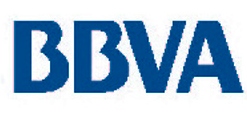
Branding is branding, there is no difference in the principles of branding that an EMNC should follow as compared to an MNC. It is in the execution that they need to be different as discussed in my book The New Emerging Market Multinationals: Four Strategies for Disrupting Markets and Building Brands. Those executional details are too extensive to discuss here and you should refer to the book.
Turning to the other part of your question, i.e., what is the foundational question that any company needs to ask if it is to build a brand? What is the brand’s identity? That is, what does the brand wish to stand for in the minds of its target consumers. Once a cross-functional team has articulated the core values and the the other elements of the brand identity, it needs to get the approval of the brand identity from the top management. Once this is done, it needs to cascade this knowledge throughout the entire organization so that everyone understands what the identity is and its implications for the way they behave with the various stakeholders relevant for the brand. It is only at this stage that the organization can begin to build the brand among its external stakeholders, be they customers, investors, the government, and the like. You can get a best practice example of the process by looking at my case study on BBVA.
Q26. Often, EMNC's emerge as a cost leader, which is a way to gain quick entry into a new market. Can the cost leader strategy alone be effective in attempting to build a MNC? (Asked by Brett Nicholls)
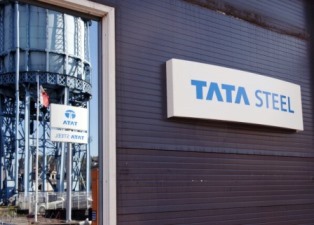
Sure, you can build an MNC using a cost leader strategy. Many of today’s MNCs are precisely that, cost leaders. Dell, the US based PC, servers, data storage, and so on player is a great example of a cost leader strategy driven MNC. You could say the same about Tata Steel, which today with revenues of US$25 billion is among the top ten steel players in the world, based on its cost leadership in the steel industry. It has operations in 26 countries, including in India (home country), UK, the Netherlands, Thailand, Singapore, China, and Australia, and a commercial presence in 50 countries which would makes it a full blown MNC originating from the emerging markets that has established itself through its cost leadership strategy.
Q27. What are the fundamental questions a brand should ask itself before performing an audit to make the right changes and adjustments it needs?
(Asked by Julieta Mandelbaum)

The fundamental question a brand needs to ask itself is “What is my identity?” A brand’s identity is comprised of the core set of values, sometimes also referred to as the brand’s DNA, that the brand wishes to stand for in the minds of its target consumers. The identity, then, is not what the target consumers necessarily currently perceive the brand to be, but it is the brand’s objective or goal in terms of the desired perception among its target customers. Without clearly articulating the brand identity, a brand does not have a clear goal to shoot for and there are no benchmarks against which to compare the brand’s image at the time of the audit.
Q28. Would EMNCs be able to create a higher level of brand awareness and recognition compared to MNCs in developed markets? If so, can EMNCs establish a unique advantage and dominate these markets? (Asked by Jeremy)
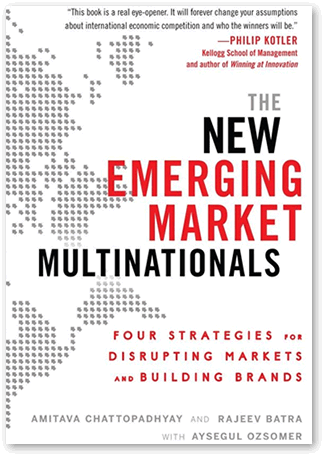
The answer to your question depends on the level of awareness of the MNC brand. Clearly, to achieve levels of awareness higher than Coca Cola in the US would be impossible because Coca Cola has almost perfect awareness. The same could be said for IBM among IT managers. Thus, the question more appropriately is, “can EMNCs generate awareness levels that are competitive with those of MNCs in developed markets?” The answer to this re-framed question is yes. LG Electronics with its LG brand, Samsung, and others have high and competitive levels of brand awareness in developed markets. Moreover, today, many storied MNC brands are owned by EMNCs. Consider Volvo, Jaguar, and Land Rover. The first is owned by Geely of China and the second two by Tata Motors of India. Clearly, these brands have very high awareness. In a nutshell, EMNCs can have competitive levels of awareness compared to MNCs, even in their home markets.
Q29. Would you recommend that EMNC telecom companies enter into MNC markets such as Canada, which is dominated by 3 major carriers, would they have a chance to survive? (Asked by Jamie W.)

Let me answer your question a little more broadly than you have framed it; that is, should an EMNC consider entering a developed market where several dominant competitors are already present? My answer is clearly yes, in terms of considering entry. Whether the EMNC decides to enter or not, would depend on their ability to find a clear market space that they can potentially come to dominate. Let me give you two examples of success stories of EMNCs in just the kind of context you are referring to.
Consider LG Electronics; it entered the United States with the LG brand in 2002 and by 2007 it had become the leading brand in the white goods space (refrigerators, washing machines, and so on), commanding the highest average selling price and having the highest level of customer satisfaction, according to JD Powers.
How did they do it, given that the US is the home market of white goods giants Whirlpool and GE? First, they were able to dramatically change the innovation cycle in the white goods category. Whereas the cycle times for innovation was 5-10 years, LG introduced innovations every other year! Second, their innovations addressed clearly unmet customer needs. Third, they brought innovations to market that were radical and not easily copied. Thus, they launched the steam washing machine in 2006 and in 2007 a three door refrigerator with the freezer at the bottom, which nevertheless dispensed ice and water from the door. The speed and nature of the innovations led them to gain distribution who in turn convinced the American consumer that LG was indeed a formidable brand. You can read more about these two stories by downloading my LG washing machine and refrigerator cases from www.amitavac.com/cases/.
A second example is Brazil’s Natura. Following its expansion through Latin America, it decided to enter France, the home of L’Oreal, the world’s largest cosmetics player. France also has all the other big players in the cosmetic space fiercely fighting for market share. Yet, Natura entered France and did so successfully. The entry has boosted its capabilities and its standing not only at home in Brazil but in the other markets it operates in. Again, you can read more about this in my Natura case which you can download from www.amitavac.com/cases/.
Q30. Would you agree that the main differentiator between MNC's and EMNC's is that EMNC's find a gap in the market and create a brand based off of a niche segment, versus an MNC creates their own market and builds their brand from scratch? (Asked by Lauren Usim)

It is true that some EMNCs create a brand in a niche segment as, for example, is the case for India’s Marico, which has built up a brand called GO in the hair gel category, targeted to more devout Muslims, by creating an alcohol free formulation. However, other brands, for example, China’s Lenovo serves the entire PC market and India’s Mahindra and Mahindra serves consumers who want “an honest SUV”, a market spanning the emerging markets from Asia, through Africa and Eastern Europe, to Latin America, plus less affluent consumers in the developed world. Clearly, these are not niche markets.
There is a second part to your question. You ask if only MNCs create new markets and build brands from scratch? Again, EMNCs also create new market spaces and build brands from scratch. Consider East African Breweries’ Senator Keg brand. The brand has opened a completely new market at the bottom of the pyramid weaning people who were drinking illicit liquor at great risk to their health and often their lives to a safe and hygienic alternative. The brand has been transformative and has won plaudits from the Kenyan government for its efforts.





























